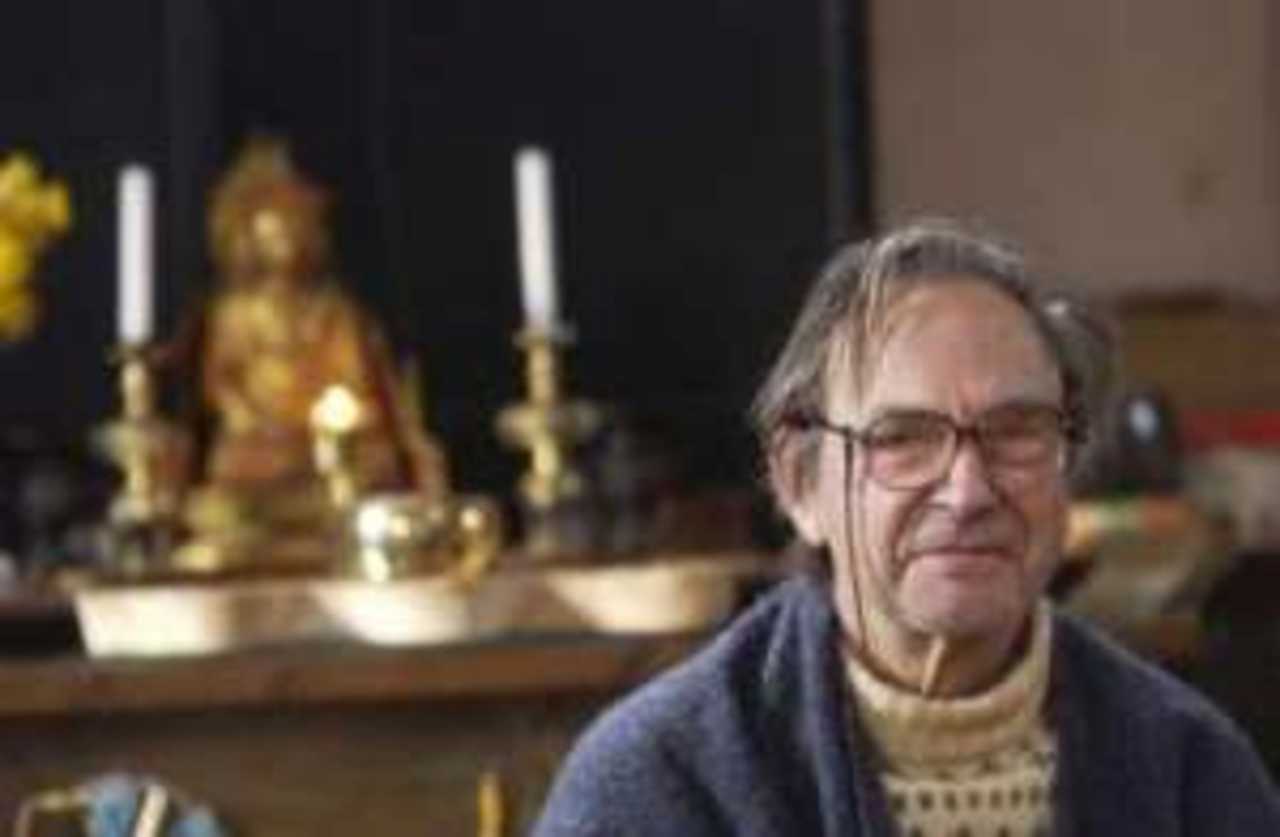The Buddha's Face
Some of us keep a Buddha image in the place where we like to meditate. Maybe we also light a candle and incense stick before entering zazen, or do some chanting. Why do we do these things?
Maybe it is simply out of respect for the memory of the Buddha or a habitual gesture of the Sangha to which we belong. Maybe the Buddha represents for us the aspiration that underlies our practice. Yet, we also may contemplate the Buddha image more directly asking, "What is that?" Here comes a Hua-tou. Indeed - what is that?
Our response is likely to reflect our current state of mind yet even to ask the question is to precipitate us into a deeper appreciation of the image before us. What is it that we have placed there?
Of course, in itself, the image is just a piece of metal or a block of gilded wood subject, like us, to ageing and decay. But, why the candle and the incense? Is this mere idolatry? Do we merely project our hopes for salvation onto a block of wood imagining it to have some occult power? Do we let superstition into our practice or some memory of Christian procedures of worship?
Someone carved that body, that face. Buddhas have many faces. Mass-produced ones have little to say but a hand-made image may be a work of art carrying within it the residues of an artist's empowerment. Buddha faces may contain many possible forms of 'interiority.' In gazing into the face, one may 'read' a moment of enlightenment, an awareness of the presence of the present or deep Samadhi. Each expression is subtly different, the skill of the artist depicting his or her own understanding. Yet, these are human faces. Given our own experiences we can interpret them and read from them an insight. If you have the chance to visit the Buddha galleries in Le Musee Guimet in Paris, you will be amazed at the depth and beauty the assembled Buddha heads of many cultures depict.
When your zazen reaches a degree of 'self at ease' the tranquillity may allow you to see a similar state expressing itself in your Buddha's face sitting there in your private shrine. Whose interiority is that? Your wooden block in itself has no interiority, nor is the artist present. Have you not projected your own 'self at ease' onto the image? Have you not empowered it yourself? And now you receive it back through the insight of zazen. This is what Tibetan lamas intend when they chant mantras while writing OM AH HUM on the back of a tangka. Given insight, you are reading the mind of the Guru in his empowerment of a picture.
May be this is the secret of a Buddha image? Empowered by an artist, it never the less receives your own empowering state of mind that filters out all negatives, retaining just the clarity of your inner vision. This is your own potential enlightenment you witness there. Out of respect for 'that' you light the incense, let the candle burn. Whenever the opposites have been set aside the Buddha mind is present. The ancient Buddha faces in their varying expressions depict this well and reflect your own condition.
Sitting with a Buddha is sitting with one's self in clarity. This is a moment for gratitude, giving thanks to the originator, Sakyamuni, who discovered the insight by himself. All of us have this potential. All of us have the face of Buddha that manifests in the interview room in moments of realisation. We need to recall it as often as we can.
Chuan deng Jing-di.
Sunday, May 1, 2011
- Publication date:
- Modified date:
- Categories: 2011 Teishos John Crook John Crook
-
 Western Chan Fellowship CIO
Western Chan Fellowship CIO - Link to this page
Back

©Western Chan Fellowship CIO 1997-2025. May not be quoted for commercial purposes. Anyone wishing to quote for non-commercial purposes may seek permission from the WCF Secretary.
The articles on this website have been submitted by various authors. The views expressed do not necessarily represent the views of the Western Chan Fellowship.
Permalink: https://w-c-f.org/Q372-97



